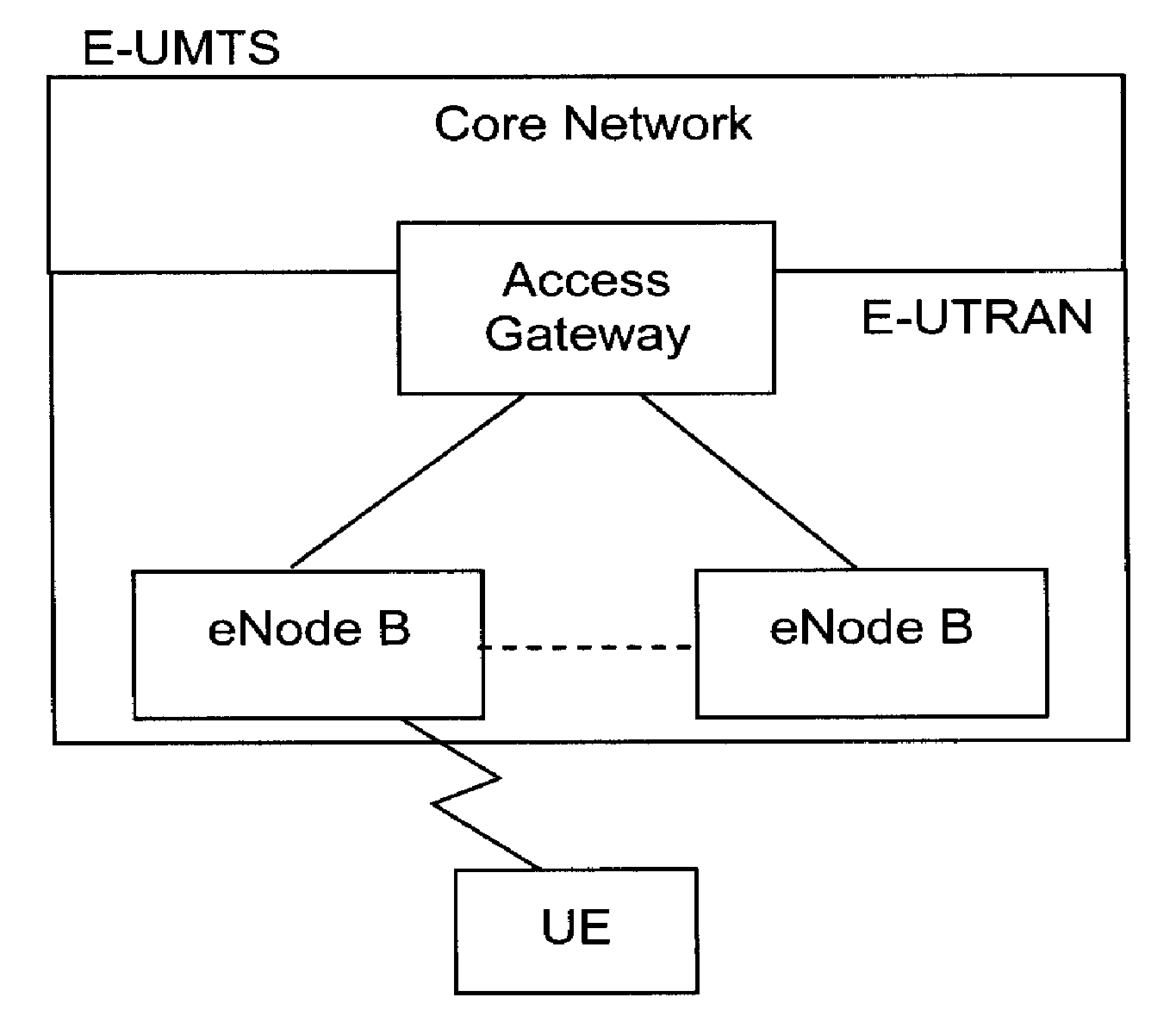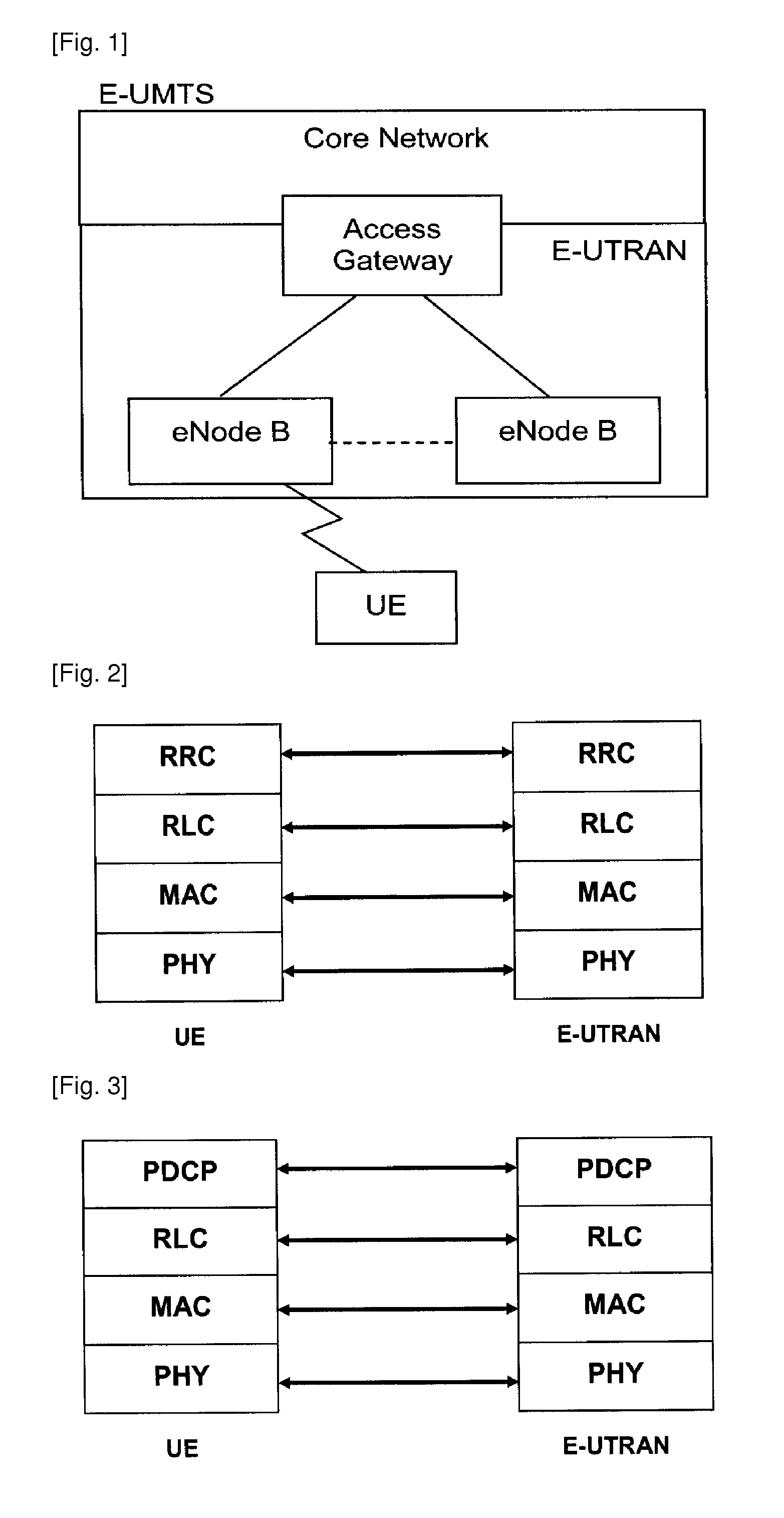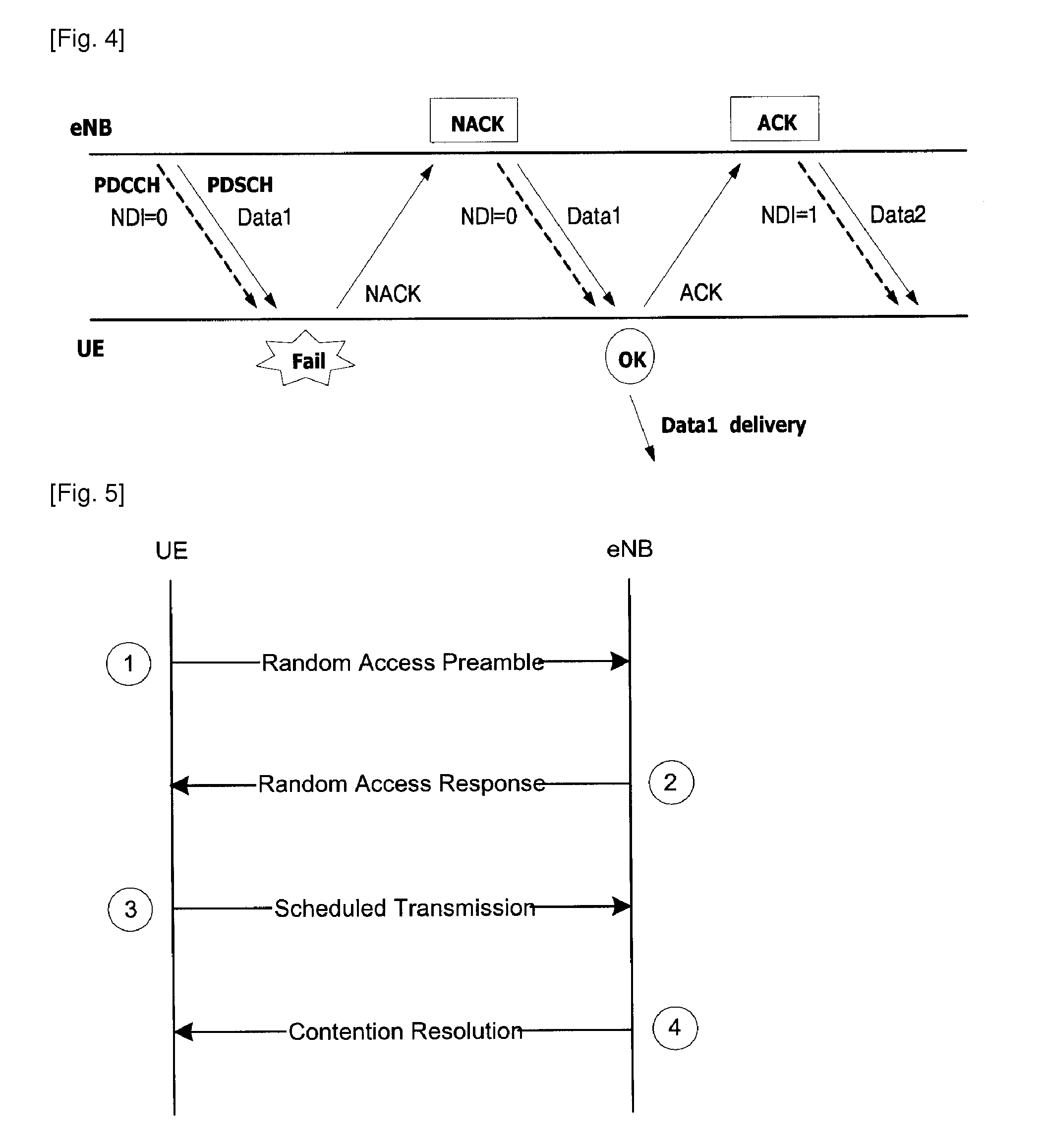Method of downlink HARQ operation at an expiry of time alignment timer
a technology of time alignment and downlink harq, which is applied in the field of radio (wireless) communication systems, can solve the problems of failure to synchronize between the terminal and the base station, insufficient transmission of the tac, and interference between the terminals (ues)
- Summary
- Abstract
- Description
- Claims
- Application Information
AI Technical Summary
Benefits of technology
Problems solved by technology
Method used
Image
Examples
first embodiment
[0042]According to the present invention, if the terminal is not time-aligned with the base station and the terminal receives data in HARQ process, the present invention proposes to discard the received data and not to send any HARQ feedback. Namely, as illustrated in FIG. 7, when the terminal (that is not time-aligned with the base station) receives a PDCCH (Physical Downlink Control Channel) including its own C-RNTI (Cell-Radio Network Temporary Identifier) or SPS (Semi-Persistent Scheduling), the terminal may check whether the received PDCCH includes PDSCH radio resource information that the terminal has to be received. If such PDCCH is received by the terminal, the present invention may propose not to attempt to receive the PDSCH radio resource information or not to decode the received data on the PDSCH. Further, the terminal may discard the received data on the PDSCH, and may not send any HARQ feedback (i.e., ACK signal or NACK signal) corresponding to the received data.
second embodiment
[0043]According to the present invention, if the terminal is not time-aligned with the base station and the terminal receives data in HARQ process, the present invention proposes to decode the received data but not to send any HARQ feedback. Namely, as illustrated in FIG. 8, when the terminal (that is not time-aligned with the base station) receives a PDCCH (Physical Downlink Control Channel) including its own C-RNTI (Cell-Radio Network Temporary Identifier) or SPS (Semi-Persistent Scheduling), the terminal may check whether the received PDCCH includes PDSCH radio resource information that the terminal has to be received. If such PDCCH is received by the terminal, the present invention may propose to attempt to receive the PDSCH radio resource information and to decode the received data on the PDSCH. Based on a result of the decoding, the terminal may determine whether to send an ACK signal or to send a NACK signal. In present invention, although such determination may be made by th...
PUM
 Login to View More
Login to View More Abstract
Description
Claims
Application Information
 Login to View More
Login to View More - R&D
- Intellectual Property
- Life Sciences
- Materials
- Tech Scout
- Unparalleled Data Quality
- Higher Quality Content
- 60% Fewer Hallucinations
Browse by: Latest US Patents, China's latest patents, Technical Efficacy Thesaurus, Application Domain, Technology Topic, Popular Technical Reports.
© 2025 PatSnap. All rights reserved.Legal|Privacy policy|Modern Slavery Act Transparency Statement|Sitemap|About US| Contact US: help@patsnap.com



